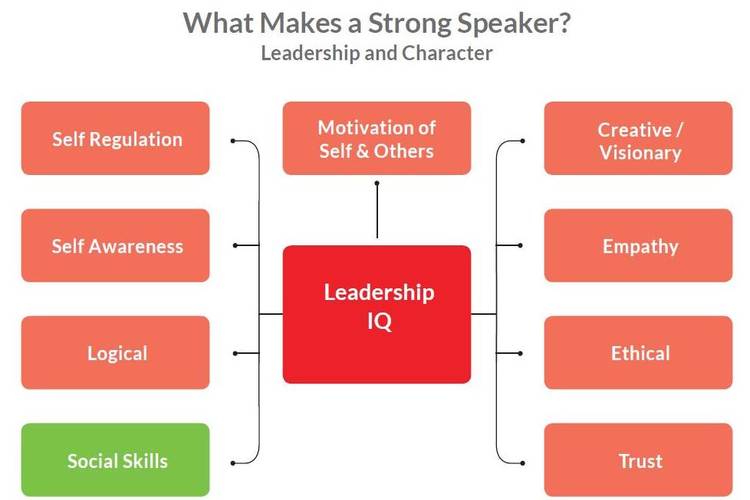
Remember, last words linger in the minds of audience so it is very important to close the presentation on a high note
You have a great business idea and an opportunity to make an important presentation in front of potential investors. Your company’s future depends on it. Your hands are shaking, knees are trembling, and you feel like running away from stage. Sounds familiar?
Public speaking is one fear which people often cite as their number one phobia; some even consider it close to the fear of dying. It is however, a skill, which most modern leaders need to master more than ever since they increasingly find themselves in situations where they are required to persuade, influence, inform and motivate individuals or groups of people. The good news is that this fear can be managed with practice, research and using simple, yet effective strategies.
There are few skills that will bring more opportunity into your life than the ability to speak well in public. This skill can make the difference between those speakers who leave a powerful, positive impression and those that are quickly forgotten. Here are the top seven effective tips to overcome your fear of public speaking.
1. Know Your Audience: Give More, Take Less
Speakers who give presentations purely to sell their products or services often end up disconnecting themselves with the crowd. Instead, you should place yourself in audience’s shoes and think about how you can help them or add value to their lives, and they will trust you more. Once they trust you, they are more likely to listen to you or to do business with you. It is always important to tailor your talk to the kind of people in the audience. Your speaking style and content should be customized when you are presenting to a group of young teenagers versus when you speak to a group of senior citizens.
2. What to Say and How to Say it?
A good speech always has a central message or theme which can be described in ten words or less. Identify the message you would want the audience to carry even before you start making
3. Prepare, Prepare, Prepare
The most important thing to do is to prepare and rehearse your presentation well. Before you walk on stage, rehearse your presentation as many times as you can in front of different groups and diverse audiences. Ask for feedback after each talk, and utilize the same by tailoring your presentation to the audiences you would be speaking to. On the day of the presentation, try to reach early at the venue so you can get a feel for the speaking area and test out logistics such as audio visuals if needed.
4. Conquering Your Nerves
Though a few butterflies in the stomach actually help bring spontaneity in your speech – being too nervous can often cause a negative impact on the audience. According to Amy Cuddy, a Harvard Business School researcher, if a person demonstrates closed body language, slouches in the chair or hunches over his phone it can cause them to feel even more nervous. On the other hand, if a person practices using open body gestures such as arms spread wide while standing upright, it helps release hormones which are responsible for reducing stress, anxiety and negative thoughts. This technique is often used by successful athletes and leading CEOs alike. You could also use deep breathing techniques before you walk on the stage to calm your nerves.

5. Speak Slow, Pause Often
Your voice is a very important link between you and your audience since it is the primary medium for conveying your message. A lively, pleasant and expressive voice keeps the listeners’ attention. However, sometimes when we get nervous, it’s not just the heart rate which picks up – but also the rate of words we speak which goes up. If you encounter yourself in such a situation, take a pause and a breathe deeply. The audience will happily wait to hear your message. In fact, adding intelligent pauses or silence while speaking will actually accentuate the impact of your message. Include a few second pauses at key moments – just before key statements or just after a story – this really brings the audience into the speech.
6. Stage Usage and Eye Contact
Divide your stage into various parts and use purposeful stage movements to highlight different parts of your presentation. You could start your presentation while standing at the center of the stage and then move around to the left and right sides of the stage at different points in your presentation. Be careful not to continuously pace back and forth through the speaking area since it might distract the audience. When you make eye contact with people, it gives them an impression that you are conversing with them. It helps in building rapport with your listeners and if you don’t do it effectively, you risk losing your audience. When you start your presentation, pick a person you are going to speak to and maintain eye contact for at least 3 to 5 seconds, gradually moving on to another person in the audience in a random pattern. Make it too long and you can make the person feel uncomfortable and any shorter than that, you may come across as untrustworthy.
7. Watch Other Powerful Speakers
Listen to powerful speeches from leaders, innovators and famous public speakers. It will help build a library of ideas in your mind by looking at how successful speakers communicate. Check out TED Talk videos for a wealth of information and examples of good stories and talks.

 In
In
Add new comment